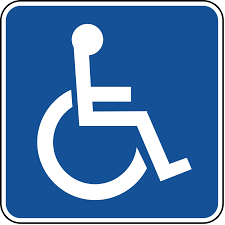 Understanding ADA Signage: What Your Business Needs to Know
Understanding ADA Signage: What Your Business Needs to Know
Making your business accessible isn’t just about parking spaces and ramps. An inclusive and welcoming space caters to individuals of all abilities. This is partly accomplished by using the right signage. ADA-compliant signage ensures that everyone who visits your business feels comfortable and confident. Providing these accommodations is more than law, they are the hallmarks of a business that cares about the people it serves.
What is ADA?
The Americans with Disabilities Act (ADA) requires businesses and public entities (including transportation services) to comply with certain standards that do not discriminate against individuals with disabilities. These standards encompass work accommodations, physical accessibility, and clear, understandable communication with the right types of signage.
As a small business owner, the ADA affects your business in two main ways: your hiring practices and its accessibility to those with disabilities. Our focus will be on the ADA signage you need to create an inclusive and compliant space.
What is ADA Signage?
ADA signage refers to signs that comply with the accessibility standards outlined in the American Disabilities Act. ADA signage is meant to be readable and understandable by people with disabilities, including those who are blind or have low vision.
Using features like high visual contrast, Braille, raised characters, and pictograms, ADA signage gives everyone clear indicators about important information throughout your business. Let’s dive into proper ADA signage.
 What Makes a Sign ADA-Compliant
What Makes a Sign ADA-Compliant
These features are critical to creating ADA-compliant signage. Working with a professional print shop familiar with ADA requirements will make it much easier to bring your business up to compliance standards.
-
High-contrast: ADA signage needs to have a significant contrast between the background and the text to make it easy to read for people with low vision or color blindness.
-
Braille: Signs must include Grade 2 Braille characters below the corresponding visual text. Braille needs to be the right size and in the right position for easy reading for those who use Braille.
-
Tactile or raised characters: Raised or tactile characters are required on ADA signs to facilitate touch reading by individuals with visual impairments. These characters have specific heights and spacing requirements for readability.
-
Pictograms: When necessary, ADA signage may include pictograms or symbols to convey information graphically—for example, wheelchairs, stairs, elevators, or phone symbols. For example, the International Symbol of Accessibility (ISA) is pictured below.
-
Proper font and text size: To ensure readability, all ADA signage must use sans serif fonts and meet minimum height requirements.
It may seem like a small thing, but having these signs around your business is the best way to create an inclusive and accessible space where everyone can comfortably navigate important rooms and services.

Where Should Hang Your ADA Signs?
There are also hanging requirements for your ADA signs. This ensures that those who use wheelchairs or mobility devices can still clearly see and find your signs. Signs must be placed between 48 and 60 inches above the floor. A good practice is to choose the height that works for your business and maintain that throughout your building. The floor beneath your signs also needs to be free of any obstructions so that they can be easily accessible.
Install your ADA signs securely on a flat surface. Signs should be located on the latch side of the door so that they are easily visible and not obstructed when the door is open. If there is no room on the latch side, signs may be mounted on the nearest adjacent wall. Pictograms and braille should be below the corresponding text.
 What ADA Signage Do You Need?
What ADA Signage Do You Need?
You are already familiar with ADA without even realizing it. Your business may have some in place already. However, it’s still important to keep everything in good working order. Replace your signage if it starts fading or becoming worn.
Generally speaking, a sign is needed anywhere there is a permanent room, exit, functional space, or accessible feature. These are some of the required spaces for ADA signage. If you have a question about placement, ask an ADA signage expert for suggestions.
-
Parking lots and van-accessible spaces
-
Entrances and exits
-
Restrooms
-
Elevators and stairwells
-
Room identification
-
Information desks and service counters
-
Emergency exits and routes
Each of these spaces should be marked with ADA signage to indicate their location and accessibility features. The signs should include tactile characters, Braille, and pictograms to help individuals with disabilities navigate the building.
 Where to Find ADA-Compliant Signage
Where to Find ADA-Compliant Signage
ADA signage doesn’t just have to be functional; it can also look and feel professional and high-quality to match your business’s needs. AlphaGraphics uses easy-to-read typefaces, non-glare backgrounds and characters, and high-contrast colors to print a compliant sign every time.
Choosing a professional printer to create your ADA signs isn’t just about staying compliant–it’s about creating a welcoming environment. With eye-catching and easy-to-read signs, you are making a positive impression and showing you truly care about everyone’s experience. Team up with the professionals at AlphaGraphics and make your space as inviting and accessible as can be.